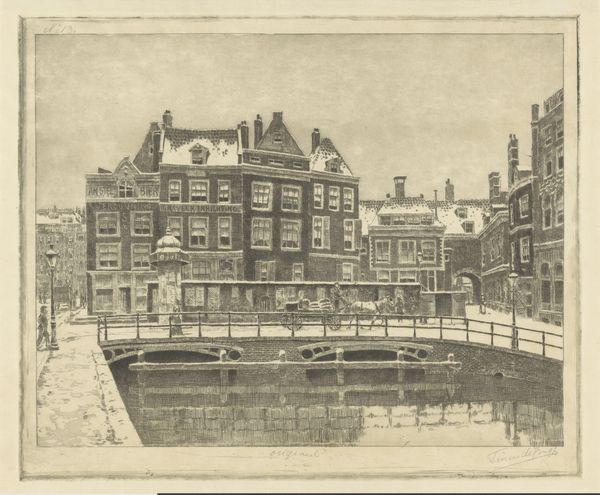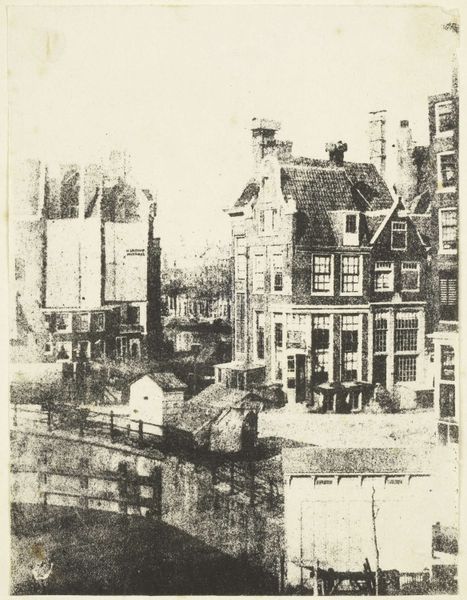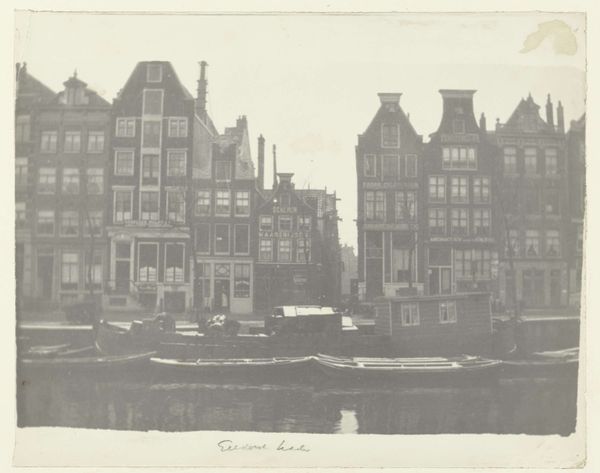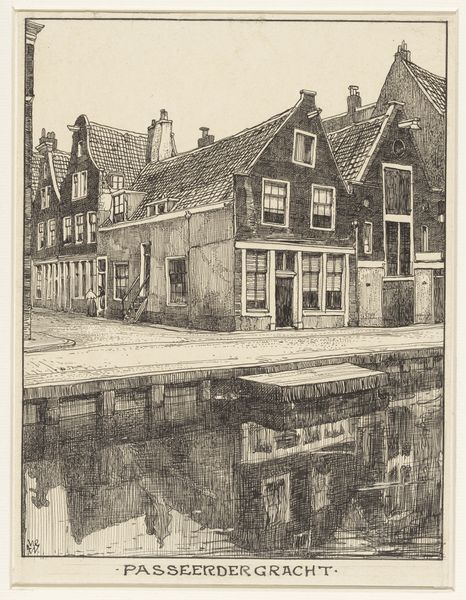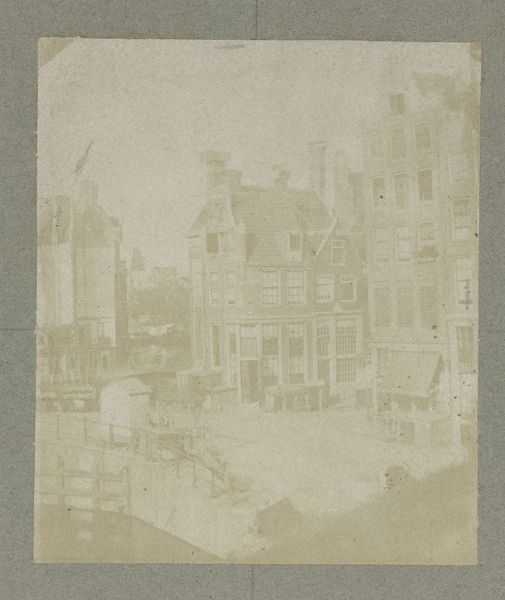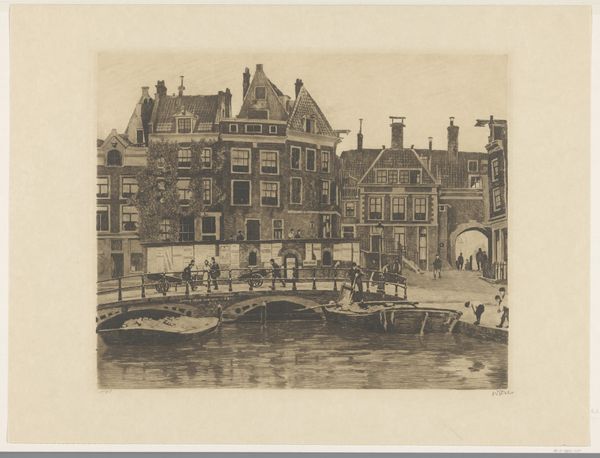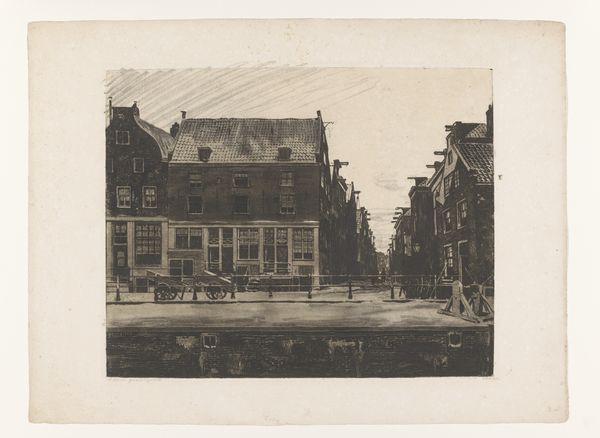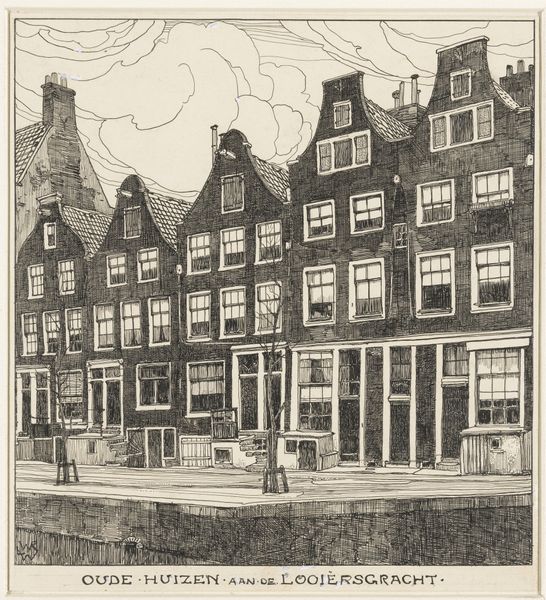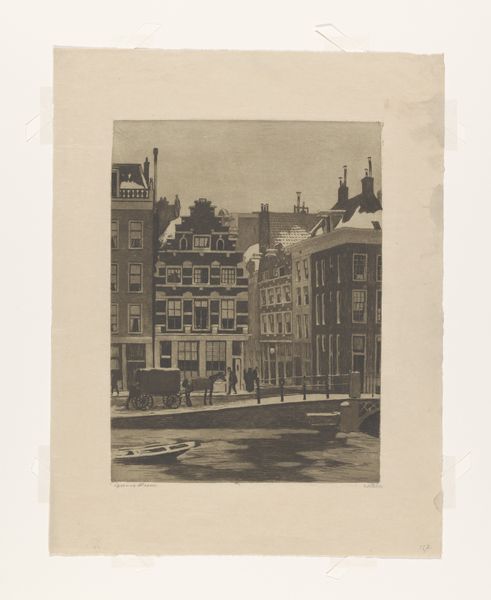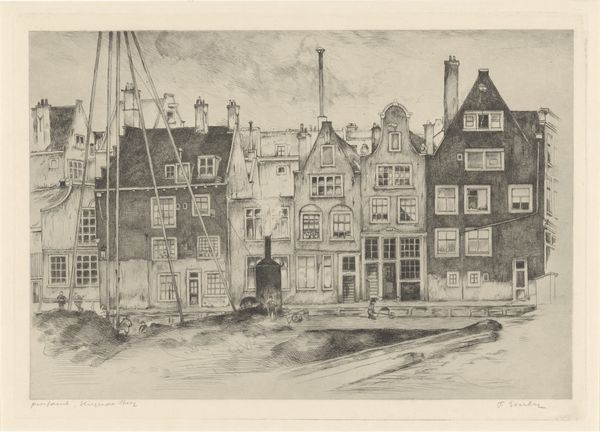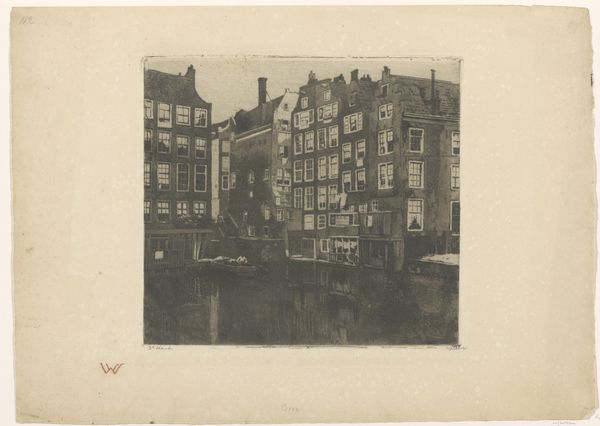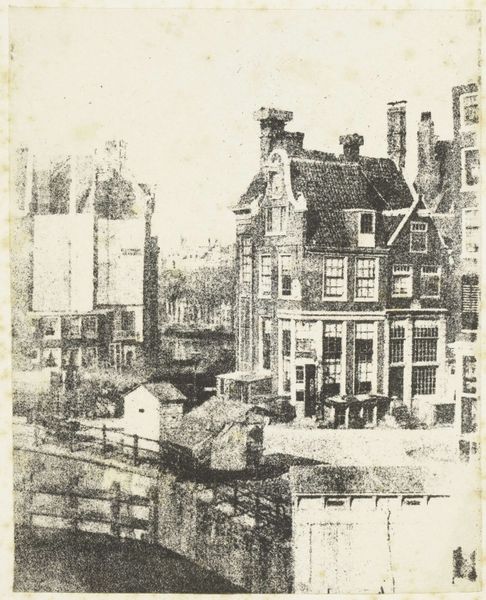
drawing, print, etching
#
pencil drawn
#
drawing
#
dutch-golden-age
# print
#
etching
#
pencil sketch
#
landscape
#
cityscape
#
realism
Dimensions: height 289 mm, width 359 mm
Copyright: Rijks Museum: Open Domain
Curator: Let’s turn our attention to Carel Lodewijk Dake's etching and pencil work, “Lauriergracht,” believed to have been created sometime between 1895 and 1918. Editor: My first impression is one of stillness. Despite being a cityscape, it evokes a quiet, contemplative mood, largely due to the restricted tonal range and the reflective quality of the water. Curator: The quiet you perceive might reflect the societal atmosphere during its creation. Consider the late 19th and early 20th centuries; massive urban growth brought about anxieties about loss of community and individuality. Dake's choice to depict this Amsterdam canal might speak to those concerns. Notice how individuals are present, yet somewhat isolated. Editor: Absolutely. The use of line is quite interesting. There's a remarkable consistency in the hatching, which flattens the pictorial space, pushing everything toward the picture plane and accentuating its two-dimensionality. The reflections in the canal seem to dematerialize the solid structures. Curator: Indeed. We might also explore how class and labor are subtly represented here. The horse-drawn cart, for example, highlights the essential role of working animals in the urban economy, a socio-economic reality often overlooked in romanticized depictions of city life. How did industrial labor affect identity and class structures in Amsterdam? These are crucial aspects for analysis. Editor: It's undeniable that those elements are embedded, although subtly. The dominance of architectural form over human figures does create a sense of imposing structure. However, focusing on pure form and the delicate balance of light and dark is equally enriching. The etching’s lines, almost calligraphic in places, suggest a crafted, handmade quality that’s far removed from industrial processes. Curator: Ultimately, Dake’s work serves as a prompt, urging us to consider the complex interplay between urban development, the silent undercurrents of social structures, and our individual place within those systems. Editor: And perhaps how art captures the ephemeral and turns the socio-historical context into formal, lasting beauty.
Comments
No comments
Be the first to comment and join the conversation on the ultimate creative platform.
